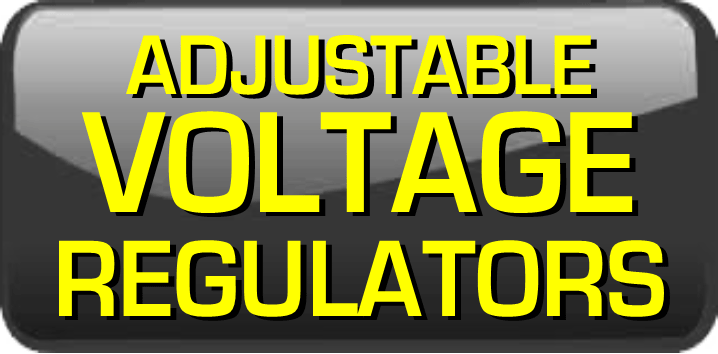| 240 Alternator Mod Page |
 |
UPDATED: January 16, 2022 CONTACT |
D O
M A I N S   |
|||
 |
 |
 |
 |
 |
 |
|
 |
 |
 |
 |

|

|
|
 |
 |
 |

|
|
 |
 |
 |

|
 |
 |
 |
 |
 |
 |
 |
 |
 |
 |
 |
 |
 |
 |
 |
 |

|
 |
 |
 |
 |
 |
Send me an email if you have questions or can contribute to any info here.
CONTACT
For details on the development of this project, scroll down or CLICK HERE.
240 Alternator Idler Pulley Bracket for red block B21/B23/B230 for use with a high-performance alternator. CLICK HERE: Alternator Idler Pulley Project Details
Questions? Please read this page or CONTACT me with questions: CLICK HERE. |
|||
View Cart or Check Out please click below button: |
|||
| Here's a video of this idler pulley bracket in action during the early prototype testing phase. https://www.youtube.com/watch?v=-O9fC3fR4ac |
| How does an Alternator Work? Here's an entertaining video https://www.youtube.com/watch?v=zfGm0gZhgCc |
| What to Do about your Old Under-Charging Volvo Alternator |
| Here's an interesting video of the complete restoration of an old Bosch external fan alternator. https://www.youtube.com/watch?v=eLgjyJBvYs4 |
|
|
|
|
| And here's one that's show you a pretty good partial rebuild of a 1988 Volvo external fan alternator. https://www.youtube.com/watch?v=6o_OrF2S_UA |
|
|
| How about a video showing how to remove your 240 Alternator? https://www.youtube.com/watch?v=A72pWPYm8yo |
| Improving the Charge with a BIGGER/BETTER Alternator |
|
| WHAT HAVE OTHER CARS MAKERS DONE TO ADDRESS THE HOT ALTERNATOR PROBLEM? In the mid-1980's PORSCHE ran into a similar problem when they added a turbo to the 944 to make the 944 Turbo. There was not enough room on the exhaust side to add a turbo. There was barely enough room for a manifold. So where did the turbo go??? Have a closer look below. This 4 cylinder engine is similar to the Volvo engine in that the intake manifold is on the left and the exhaust is on the right. Unlike Volvo, the Porsche engineers found NO ROOM on the exhaust side to mount a turbo. Instead, they ran a pipe from the exhaust manifold, UNDER THE ENGINE, all the way to the intake side and put the turbo under the intake manifold right behind the alternator! Crazy stuff. You can feel fortunate there were no German engineers working on the Volvo turbo engine.    I had a discussion about heat-related voltage drops with a Porsche 944 Turbo owner. Porsche engineers did something extra to help reduce the heat by adding a LARGE cool air duct to bring air into the back of the alternator. This likely helped during highway speeds, but heat was still always a big problem. Volvo engineers would have had a much more difficult time doing something like this, unless they moved the OIL FILTER.   |
| CAN COOLING DUCTS BE INSTALLED ON A VOLVO 240 ALTERNATOR? Yes, if you're determined enough. There isn't any room behind this 240 alternator below. Adding a shroud or duct would require some work and relocating that oil filter. |
 |
| So if the 240 oil filter was to be re-located, there could be room for something like this low-profile cooling shroud below. This shroud is Porsche PN 96410640302. I have not tried doing anything like this. If you're inspired to try it, please let me know. |
 |
Volvo (Bosch) 55 Amp versus 100 Amp Alternator Size Comparison  
 |
|
 SPACE FOR THE OIL PRESSURE SENDER Since the Bosch 100 amp alternator case is physically BIGGER than the old 55 amp alternator, it causes interference with the large 2-pole oil pressure sender found in a 240 Turbo. That brass 45 degree fitting came standard on a 240 Turbo, but the bigger alternator still hits the sender with that fitting unless you can swing the alternator outward far enough.  |
|
So generally the oil pressure sender needs to be re-positioned to make
room. Sometimes finding the room for it need some new ideas, but if the alternator can be swung out further from the engine (with longer belts) you can be successful.
THESE PICS are from some other 240, not mine, but it shows how TIGHT THAT SPACE is for the oil pressure sender when a big alternator is put in there. |
| Ultimately, I dealt with the cramped space a bit differently as you see in this image below. I mounted a remote sender after I have some bad experiences with other options This option actually worked very well. Here's a thread that goes over this mod in more detail: https://forums.tbforums.com/showthread.php?t=192788  |
If you can find enough room, the ultimate position for this sender is
shown here, WITHOUT ANY BRASS ELBOW or ADAPTER, but this would require some planning to get the alternator EVEN FURTHER away from the engine and/or a smaller alternator might work. |
| A longer belt MIGHT have helped this installation by swinging the alternator further from the engine,
which would make extra room for that oil pressure
sender. But then you find that swinging the alternator further out moves the belts TOO CLOSE to the alternator mounting bracket below it.
A longer belt in this situation means the belt is going to hit that bracket. So the longest belt in this situation is probably going to be somewhere close to the 10 x 950 mm I used. That belt is about 25 mm longer than factory. |
| What about a DENSO? |
| Here's the Nippon Denso alternator in a 240.
It has become popular to install this smaller case alternator, which can be found in some later 700/900 models. It's physically smaller than the above 100 amp Bosch. These Densos can usually be found in 80 or 100 amp capacity. They perform pretty much the same as a large Bosch alternator at idle. The most positive benefit is that they do fit better. There is more room for the oil pressure sender with this more compact alternator. 
Denso alternators found in Volvos are usually 80 Amp or 100 Amp. They look similar to each other, but you'll notice the 80 Amp units have a small 6 mm lug for the fat red cable. 100 Amp units will have a larger 8 mm lug.   |
| SERVICING A DENSO |
| Here's a page devoted to rebuilding a Denso alternator with more pics: https://www.volvoclub.org.uk/faq/ElectricalDensoRebuild.htm And a discussion thread on Servicing a Denso Alternator: https://forums.turbobricks.com/showthread.php?t=349853 |
| INCREASING THE VOLTAGE IN A DENSO What about increasing voltage output for a Denso alternator like this? It's not something I have tried personally, but there now seems to be some interesting videos on this subject. Here's one where the author increased output from 14 volts to 14.7 volts. The video is not in English, but following along is pretty easy. https://www.youtube.com/watch?v=HRgSHGhcolg&feature=youtu.be |
| Introduction of the MECHMAN ALTERNATOR #1 This installation was in 2010. NOTE: MECHMAN ALTERNATOR #2 was installed in 2019 and CAN BE FOUND HERE. |
| In 2010 I decided that the 100 amp
Volvo Bosch alternator was no longer going to cut it.
The biggest problem was how it charged at idle. When running the air conditioning (with a big electric primary puller fan and dual condenser fans), voltage was suffering badly at idle and much worse after the alternator started getting HOT or if I turned on the air conditioning. I had begun using a big Ford electric puller fan, starting with a Ford T-bird fan and eventually getting to a Lincoln Mark VIII fan that pulls up to 40 amps at full speed.
With the Bosch 100 amp alternator, the voltage drop between COLD and HOT with a heavy load at IDLE was: 14.4 volts COLD to 12.4 volts HOT. BOSCH = A FULL 2 VOLT DROP! Also this situation was forcing me to set the idle speed higher than it normally should be to help keep voltage from going through the floor. Here's a temperature reading from my exhaust manifold (AT IDLE) a short distance from my alternator. 
|
| WHY DOES CHARGING VOLTAGE DROP SO MUCH? HOT AUTOMOTIVE ALTERNATOR VOLTAGE DROPS. (SPOILER: It's about the WARRANTY) You've noticed how much voltage drops when your alternator gets hot, right? This is not something that car alternator manufacturers want to talk about. The reason is that automotive alternators are specifically engineered so that they reduce output when they get hot. This is because heat is an enemy to an alternator and it can be a common reason for failure. So alternator engineers designed their alternators to have the best chances of surviving the WARRANTY PERIOD. Engineering them to reduce output when they get hot is the answer to that. So there's really not much else you can do with a standard automotive alternator if it's getting hot and dropping voltage. Volvo did add a thin heat shield for the 240 Turbo. It probably helped a little. This is not as big a problem in cars where the alternator is on the opposite side from the exhaust or turbo, like in the Volvo 740 or 940. |
| In 2010 I was introduced to Mechman high performance alternators by a
Turbobricks member. I then talked with Mechman and I told them about my low idle voltage. I was assured that the custom unit I was buying would improve voltage at idle by offering more amps at idle. Mechman didn't really have a high-performance Volvo-specific alternator, so they custom tailored a GM Delco style alternator to fit a Volvo. Skipping ahead: The Mechman alternator did improve charging at idle and overall output was much better, but it STILL suffered from an annoying voltage drop when it got hot. The voltage drop was not as bad as the Bosch though, but I still had to resort to keeping my idle up a bit higher than normal to keep charging voltage from dropping off below 13V when everything was on. I began thinking there might NEVER be a real solution for a 240 Turbo with the alternator on the exhaust side and I thought I might have to eventually move the alternator to the other side of the engine like on the Volvo 740. |
I began a discussion thread in Turbobricks in 2010 back when I did this, which did help me solve some issues. That thread is here: https://forums.turbobricks.com/showthread.php?t=215613. |
| UPDATE: August 2019 I learned that Mechman no longer offers CUSTOM FIT alternators like the one I bought below. It was customized (machined) to fit a Volvo red block. BUT, I have since found there are STILL excellent solutions to make a universal high-output alternator fit your Volvo. I've added info that should help. CLICK HERE. |
| Here's the Mechman alternator from 2010 compared to the Bosch 100 amp I was using up to that time. The Mechman used a large case GM Delco style housing that has been slightly modified to correctly fit in the factory Volvo mounting location (while also using a few spacers). I was told this Mechman unit was a one-off 170 amp alternator based on the Delco AD230 (1996-2013 GM truck) with a little custom machining to its case so it would bolt up similar to the Volvo Bosch alternator.  Similar Volvo conversions have been done using GM AD244 and GM DR44 late model truck alternators. The reported benefit is excellent output at idle, which is something the old Volvo Bosch unit don't do well. More about the modifications Mechman did can be found HERE.     |
|
Here's what the above 2010 Mechman #1 looked like installed in my car.
  The belt size I used for the Bosch 100a unit was 10 x 925 mm or 10 x 950 mm. I found that I could swing this Mechman slightly further from the engine and the new belt size used was 10 x 965 mm. |
| GROUND CABLE: Attaching a big ground was a bit different on this alternator. It didn't come with a ground stud on its case, so the solution (also suggested by Mechman) was pinching a ring terminal against the case underneath as shown here. It turned out to be a good solution as long as that long bolt doesn't tend to loosen over time. I used a good lock-nut on that long bolt to make sure it didn't vibrate loose.  The best charging results with this new (2010 Mechman) alternator came after I added a dedicated 4 GAUGE ground cable and positive cable from the alternator directly to the battery. You can see the results of numerous tests in the above mentioned installation thread. I still experienced a significant COLD-to-HOT VOLTAGE DROP using this alternator, but ultimately adding these cables provide the best result so far for any alternator I had tried. |
| Using enhanced (LARGE) POSITIVE and NEGATIVE Battery to Alternator Cables. The latest version I did on my car uses large WELDING CABLE. Welding cable uses very fine strands in the wire, making a large, fat cable much more flexible. Why do you need flexible cable? I'll tell you why. My first version used large, fat normal strand cable. The vibration and flexing of the fat power cable to the alternator eventually broke the cable at the alternator lug after a number of years and many miles, leaving me stranded and calling for a tow. 
This illustration below will give an understanding of what is recommended with a high-amp alternator. You should consult the manufacturer of your alternator for a cable size recommendation, but be prepared to be told to make them very BIG. I made this illustration below to show big dedicated cables (POWER AND GROUND) going directly from the alternator to the battery, so power and ground is as absolutely as direct as possible. The cable between the alternator and the starter becomes optional, since you really no longer need that cable if you do this. Keep the cable from the battery to the starter though, since you'll still need that to start the engine.  |
|
|
 <<< WARNING NOTE: I don't recommend using one
of these inexpensive disconnect devices on your battery
when using a high output alternator like this.
I had one of these on my
negative battery terminal. After
installing the Mechman I began experiencing
some strange intermittent momentary voltage
drops when the alternator was under load,
such as when the AC was on. It took a
while to figure it out and it's detailed in
the Turbobricks thread mentioned above. It turned out
that this disconnect knob was creating high resistance in the ground cable
circuit and the Mechman was sensitive to
it. I removed it and made sure my battery ground was more solidly connected. <<< WARNING NOTE: I don't recommend using one
of these inexpensive disconnect devices on your battery
when using a high output alternator like this.
I had one of these on my
negative battery terminal. After
installing the Mechman I began experiencing
some strange intermittent momentary voltage
drops when the alternator was under load,
such as when the AC was on. It took a
while to figure it out and it's detailed in
the Turbobricks thread mentioned above. It turned out
that this disconnect knob was creating high resistance in the ground cable
circuit and the Mechman was sensitive to
it. I removed it and made sure my battery ground was more solidly connected. |
| Unintended Side Effects of a High-Performance Alternator: DEALING WITH BELT SLIP |
Back to this photo: Have a good look at the belts wrapping around that pulley. There's just a little more than 90 degrees of belt wrap and the actual belt-to-pulley contact patch is small.
This
was not already becoming a problem back when the weaker 55 amp Bosch
alternator was in there, but then it became intolerable with a high
output alternator.
I found that I needed to tighten the
alternator belts much more and then they needed adjusting
later. I was putting a LOT of stress on these belts and you'll see
below it can cause problems. That bolt in the block for the adjusting bracket has been known to break off (it also happened to ME) and I have seen a few people with broken water pump pulleys (see thread here: https://www.forums.turbobricks.com/showthread.php?t=323223).
Over-tightening is just plain BAD. It can also prematurely wear of your water pump bearings and generally your belts
don't last as long as they should. They just wear faster and then they will begin
slipping again sooner. |
| MORE ON THIS ISSUE WILL CONTINUE BELOW. |
| Belt Failure Concerns Some reasons why over-tightening is BAD, in case you're wondering. |
 This was NOT an alternator belt. This was a 240 crank pulley to AC belt. It failed on my 242 after about 300 miles of use because I goofed and adjusted it too tight. The belt didn't actually break, but it did jump off the pulleys. |
|
|
That
long corded string stuff above was the embedded cord in the top-side of the
belt. The cord separated from the belt (or maybe snapped from too
much tension) and then eventually unraveled.
The belt eventually came off the pulleys and I found it sitting in my
belly pan. Most of that corded material ended up wrapped around my AC
pulley. Once that
corded part separated, the belt lost the ability to stay tight. After losing that corded material, the
belt becomes more like a big, soft, stretchy rubber band.  |
| MECHMAN #2 Update 2019: I Got a New BIGGER/BETTER Mechman |
| In 2019 I installed a new Mechman #2 for the 242. This one is actually physically about the same size as the previous Mechman, but it's much "beefier" on the INSIDE. This alternator came with a 170 amp 6 phase HAIRPIN STATOR. According to the literature a bit further below, it's based on a GM Delco CS130D 1998-2002 GM F-body (Camaro). This Mechman part number was B8206170M (PN B8206 with 170 amps).   |
| This particular alternator
was custom prepared by Mechman. This means they did some MINOR MACHINING to the case so it would easily bolt up in the Volvo red block mounting location similar to a
normal Volvo Bosch alternator. And of course it also got a double V-belt pulley since that's needed for a 240. More on the custom modifications that were done to create this alternator can be found HERE. |
| UPDATE NOTE about custom availability: August 2019 In 2019 I learned that Mechman no longer offers CUSTOM FIT alternators for Volvo. Mine was mildly customized to better fit a Volvo red block. But are these custom features really necessary? The answer is NO! There are good solutions to make a UNIVERSAL high-output alternator fit your Volvo. I have added info below that will help. CLICK HERE. |
| Before getting this alternator I had no clue what a 6 PHASE HAIRPIN STATOR
was. Now that I know, I'm here to say that if you upgrade to a
high-performance alternator, buy one with a hairpin stator. I wish someone had educated ME about alternators like this BEFORE I BOUGHT MECHMAN #1! There's info below that will show you how different a 6 phase hairpin stator looks compared to a normal type. |
. . . but does it actually perform better? YES IT DOES. Keep reading below.
| WIRING I've added some information below on the WIRING for this alternator. Below you can see that this installation included an Adjustable Voltage Boost Module (AVBM). I was talked into buying this with the alternator order, mainly because I questioned whether this alternator could actually support the Voltage I wanted, without HOT voltage drops or simple overload voltage drops. I was coming from the perspective and experience that NOTHING (so far) had been successful at providing that. So I was open to trying it. As it turned out, the AVBM was NOT needed, but since I had installed it, I kept it and used the voltage readout to keep track of voltage. I never needed to adjust it, ever. It was useful because the voltage readout was reflecting voltage taken directly from the alternator, not simply the voltage seen at the dash, like a normal volt meter would show. Anyway, the AVBM was discontinued by Mechman, so it's NLA. Eventually, I plan to REMOVE THE AVBM and I'll install a simple voltage gauge or digital read-out for monitoring voltage. I'll show the new wiring on the alternator below.  . Here's the simplest way to connect the Mechman.  Activation of a GM style alternator with 4 pin plug. This is a departure from the usual way a Bosch alternator gets activated or “excited” using the red D+ wire from the dash charge warning light. This method below is used for GM style alternators using the below 4-pole plug. With this method the “L” terminal is connected to switched 12v. The 12v source will activate the alternator when the car begins running. It must be a switched circuit, because if a constant 12v circuit was connected, it would drain your battery. Connecting the “S” terminal to the alternator output is optional. ALTERNATOR PLUG EXPLANATION This plug connects to the regulator and would be typically found in a 1998-2002 GM F-body (Camaro), 2004-2005 Buick or Pontiac, and 2001-2006 Cadillac. Fits alternator part numbers: Denso 104210-3060, 104210-3070, 104210-3300, 104210-4540; GM 15145637, 25697765, 25697766, 25758348, 25759776, 84009369.  VOLTAGE REGULATOR If the voltage regulator ever needs to be replaced on this CS130D type Delco alternator, I thought I would add that info here, just in case it becomes useful in the future. 12 Volt, B-Circuit, S-F-L Terminals, 15.0 Voltage Set Point, w/ LRC For Denso Alternators. Part Numbers: Denso 126600-0030, 126600-0031, GL10031, 104210-330, 104210-454, Transpo IN6003.  |
MORE MECHMAN INFO |
||||||||||||||||||||||||||||
| HAIRPIN STATORS (Info taken from MECHMAN'S web pages) 6 Phase Advantage  Mechman Elite and S Series alternators employ cutting edge alternator technology not found in other aftermarket alternators. 6 phase hairpin stators make Mechman Elite and S Series alternators fundamentally more efficient than other aftermarket alternators. This new technology and increased efficiency equates to incredible output at extremely low engine RPM, less energy wasted in the form of heat, and more horsepower to the wheels. Also because less heat is being generated, the internal components of Mechman Elite and S Series alternators last longer. This is especially beneficial on turbocharged and/or endurance racing vehicles with high engine compartment temperatures. All Mechman Elite and S Series alternators feature soldered stator and rectifier connections, with epoxy re-enforced stator connections, reducing the chance of vibration failures. High Pole Count  Mechman Elite and S Series units are built exclusively with precision balanced low-mass rotors that allow them to operate safely at shaft speeds of 20,000+ rpm. This high RPM capability, combined with excellent output at idle, gives the user a much broader operating RPM range, and more flexibility in the size of the crankshaft pulley used. A properly selected Mechman Elite and S Series alternator can even fix low voltage problems caused by using small diameter, or "underdriven" pulley ratios. The higher pole count in the rotor also results in less electromagnetic interference to cause problems with radios and other electronics. Twin Rectifiers  As a final precaution, Mechman Elite and S Series alternators are constructed with twin high efficiency cooling fans, and twin internal rectifier plates. While other high performance alternators have only one rectifier with 6 diodes. Mechman Elite and S Series units boast 12 press fit diodes with 300% more surface area to dissipate heat. These considerations to cooling airflow and heat dissipation make Mechman Elite and S Series high performance alternators the most durable aftermarket alternators you can buy. If you are experiencing pre-mature alternator failure, intermittent electrical accessory problems, or low voltage at any engine RPM, a Mechman Elite or S Series alternator is the answer! |
||||||||||||||||||||||||||||
|
||||||||||||||||||||||||||||
|
||||||||||||||||||||||||||||
Here are the dyno specs for my new 6 phase alternator, Mechman PN B8206170M. As you can see it puts out up to 145 amps at idle.  That sounds impressive but what does that mean in real life?
Impossible you say? I would have doubts too if I didn't see it for myself. So yes, if you can afford it, buy a 6 phase hairpin stator alternator. |
||||||||||||||||||||||||||||
|
| ||||||||||||||||||||||||||||
| And this video shows the fully HOT alternator voltage when getting a full load: https://www.youtube.com/watch?v=T5c_6JGEplo |
||||||||||||||||||||||||||||
While the above reading may seem deceiving, the actual voltage drop measured at the battery is shown below. |
||||||||||||||||||||||||||||
|
|
||||||||||||||||||||||||||||
|
||||||||||||||||||||||||||||
|
||||||||||||||||||||||||||||
|
||||||||||||||||||||||||||||
| I began a discussion thread on this project in 2019: https://forums.turbobricks.com/showthread.php?t=350085 |
||||||||||||||||||||||||||||
| ||||||||||||||||||||||||||||
|
||||||||||||||||||||||||||||
|
|
||||||||||||||||||||||||||||
|
||||||||||||||||||||||||||||
|
||||||||||||||||||||||||||||
|
||||||||||||||||||||||||||||
|
|
||||||||||||||||||||
|
|
|
|
||||||||||||||||||
Here's a good selection of 2-groove pulleys, all machined from cold-rolled steel. https://store.alternatorparts.com/2-groove.aspx |
| davebarton.com |
prancingmoose.com |
240turbo.com |
Contact Us |
| Prancing
Moose Stickers |
Volvo
Stickers |
Body/Chassis/Engine
Labels |
New Items |
| Other Car Brand
Stickers |
Steering
Wheel Labels |
Center Cap Labels/Overlays |
Cool Volvo
Products |
| Grill Labels/Overlays |
Volvo Wire
Harnesses |
Conversion Harnesses |
Harness
Parts/Connectors |
| Volvo Relays |
Coil Repair
Harnesses |
240 Window
Scrapers |
740/940
Window Scrapers |
| Adjustable Voltage
Regulators |
Horn Buttons |
240 Odometer
Repair |
740 Odometer
Repair |
| Volvo Gauge
Faces |
740
Turbo/Boost Faces |
240 Black Door Vinyl |
850 Odometer
Repair |
| ALTERNATOR PAGE |
240 Power Mirrors - Switches |
240 Oil Cooler Page |
240 Fuse Panel Page |
| Group A
Racing Volvo 242 Turbo |
240 Hydraulic Clutch | Fuel Pump Relay Page |
240 Headlight Relay Page |
| Used Parts & Stuff |
CRIMPING Page |
240 Ignition Page |
240 Headlight Page |
| 240 Gauge and Electrical Diagrams | 240 Rear End Page | Yoshifab Catch Can Install | 240 Mods and Fixes |
| Side Marker Lights | Gentex Mirror Upgrade | Yoshifab Drain Tube Install | Modified 240 Favorites |
| SoCal Salvage Yards | Unleaded Racing Fuel | B26FT Stroker | Dave's 245 Spec Page |
| 240 Suspensions | 240 Lowering Page |
240 Windshield Page |
240 WIPER Page |
| 240 Big Brakes | 240 Dash Top Gauge Pod | Cadillac 4-Note Horn Install | 240 Dynamat Install |
| 4 Speed Fan
Controller |
Electric Cooling Fan
Page |
Tropical Fan
Clutches |
240 AC Page |
| 240 VIN Page | Stepper Idle Valve Page |
Vacuum Diagrams | Volvo Meet Photo Albums |
| 240 Exhaust Page |
|
EFI - Ignition PIN Function Diagrams |
Favorite Links |
| R-Sport
Apparel |
Prancing
Moose Apparel |
Mojave Road Trail Map Page |
Texas Volvo Meets
and Events |
| Ordering Instructions | Policies | Payments | Shopping Cart Troubleshooting |
| Returns | Shipping |































































